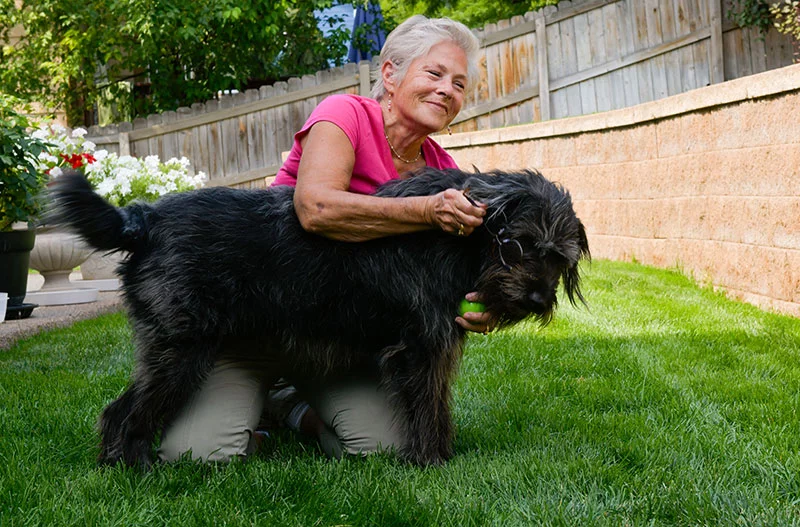
If you catch a glimpse of Audrey Gammie lately and her step seems lighter — it is.
Literally.
Her life has been transformed from constant pain so severe that she was on supplemental oxygen to help her breathe, needed a walker to shuffle just a few feet and relied on a regimen of pain medication that would cause her to fall asleep throughout the day and prevented her from driving.
“I couldn’t think, I couldn’t do anything. My life was no life. All I was doing was sleeping. I was depressed,” Audrey said. “My quality of life was zero, and I felt there was nothing. Honestly, I felt like life was nothing.”
Removal of old hardware from a previous spinal fusion in Audrey’s back and a second fusion procedure have made her into a new woman at 68. At the core of her amazing recovery was her determination to go through post-op recovery and rehabilitation with little or no pain medications, as she didn’t want to return to her previous dependence on them.
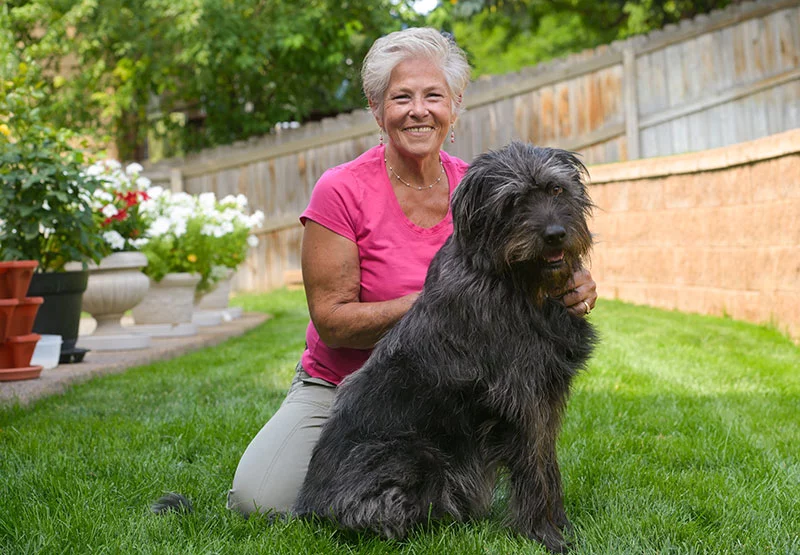
Within a few weeks of her operation, Audrey’s UCHealth physical therapist could barely keep up with her enthusiastic patient.
“After surgery, she arrived as a whole new person. She walked into the clinic with no assistive device, no walker, no oxygen. She was alert, with color in her face and a smile. I absolutely could not believe it,’’ said Diana Edwards, who worked with Audrey at the UCHealth Physical Therapy and Rehabilitation Clinic-Inverness. “Never before in my practice had I ever seen anything like it. It was life-changing.”
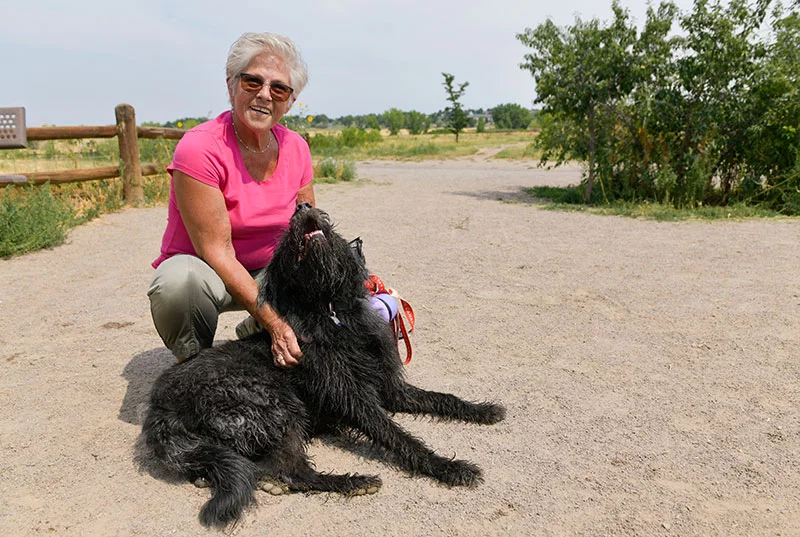
Why do so many of us suffer from back pain?
Back pain is a common affliction. According to the Bureau of Labor Statistics, back injuries account for one of every five workplace injuries or illnesses, with more than 1 million workers annually suffering from back injuries.
The spine, which protects our spinal cord and nerves, is the main support system for our body. It is comprised of vertebrae, cartilage and discs, which are the spongy tissue that cushions the bones.
Unfortunately, our backs take a beating over the years. Normal wear and tear, exacerbated by sports, recreational activities and accidents, can aggravate the complex spinal structure that protects and supports our nervous system along with our body’s movement. In addition to physical support, the spine also serves as the main highway for our brain to communicate with the rest of our body.
Some of the most common causes of back pain are pinched nerves and degenerative conditions such as arthritis and osteoporosis, which typically occur in people over age 50.
A pinched nerve occurs when too much pressure from tissue, a disc, or bones in the back stresses nerve fibers. This physical contact causes inflammation along the spinal nerves, with the back muscles responding by cramping and locking up, creating even more pain.
Meanwhile, as we age, osteoarthritis in the spine causes joint pain and reduced mobility, while osteoporosis makes bones more fragile and likely to fracture.
A retired medical assistant who lives in Parker, Audrey’s back pain worsened due to both pinched nerves and osteoporosis. She had spent many years on her feet as a nurse aide in the 1980s and recalled an incident when she was helping a patient sit up in bed and severely strained her back. It was never the same after that.
An earlier spinal fusion surgery to relieve her lower back pain had worked temporarily for a few years, but by the fall of 2024, she was in worse straits than ever.
“It just progressively got worse,” said the long-time Colorado resident. “It was constant pain for years, and I couldn’t do anything about it. I couldn’t move. I couldn’t walk. I was on pain meds just to get through the day.”
According to Audrey’s orthopedic surgeon, Dr. C.J. Kleck, she did well initially after the first surgery, but with the back and all its intricacies, adjacent nerves can become compressed, necessitating additional procedures.
“Just because we discover something new that needs to be remedied, doesn’t mean the old surgery failed. Often, one thing is fixed, but we can’t predict the future, and we let patients know that another issue might occur. It’s not failure, it’s just a natural progression of spinal disease.”
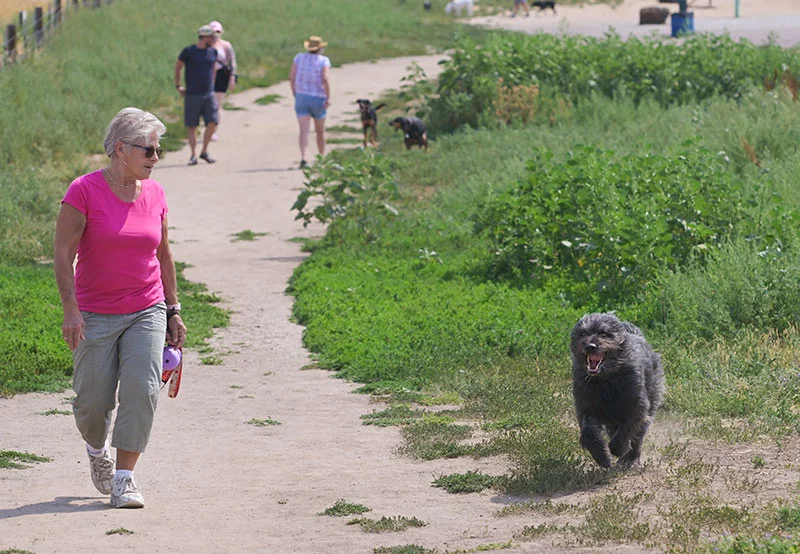
Surgery is not the only choice for those who suffer from back pain
Surgery is rarely the first go-to choice in efforts to decrease back pain. Doctors usually want patients to explore other avenues such as exercise, physical therapy, yoga and massage.
“An important part of a major surgery like a spinal fusion is that outcomes can be unpredictable,” Kleck said. “I do my best to tell patients that there are no guarantees and try to get them to a place where they can avoid or put off surgery.”
Other ions include outpatient, low-invasive, non-surgical procedures such as steroid injections or radio frequency ablation that they can use to alleviate pain before they take a surgical route. During this procedure, radio waves are sent through a needle placed precisely on the nerves of the arthritic joints. “Burning” the nerves prevents the pain signals from being sent back to a patient’s brain. The technique usually provides relief for about a year, sometimes longer. When the nerves grow back and if the pain resumes, the ablation can be repeated.
Despite attempts at multiple pain regimens to help her function better, nothing seemed to work for Audrey.
“Despite working hard in regular physical therapy, she steeply declined,” Edwards said. “She was having cognitive difficulties, and I was watching her slowly decline. It was heartbreaking. Seeing her functionally deteriorate was so tough because she is such a kind-hearted and loving person.”
According to UCHealth internist Dr. Christopher Dobbelstein, who had been providing primary care for Audrey since 2021, the pain meds were a Catch-22. While they were easing her physical pain, they were negatively affecting her mental capacity and causing her stomach to bleed, which led to anemia. Medication Dobbelstein prescribed to stop the bleeding caused malabsorption of protein, leading to severe leg swelling.
Audrey seemed to reach a breaking point when she could no longer live on her own.
“We both agreed that a second operation was a good option,” said Dobbelstein, also an assistant professor of psychiatry and medicine at University of Colorado School of Medicine at the Anschutz Medical Campus.
By this point, Audrey couldn’t walk her dog Bella and became dependent upon family members to care for her. She took solace in sewing, her only remaining hobby.
“My goals were to drive again, get off pain meds, become independent and not end up in an assisted living situation.”
Finally, last November, she decided to undergo another surgery and have the hardware in her spine removed and replaced.
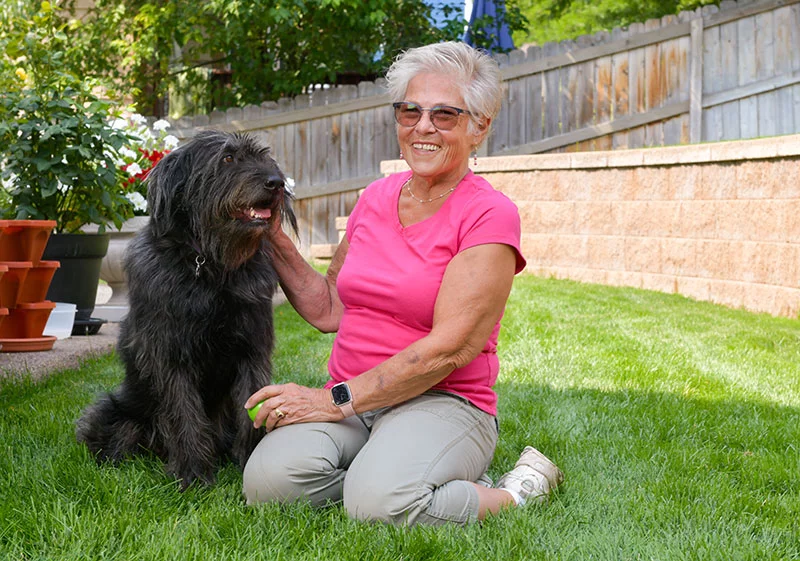
Audrey opts to give second back fusion surgery a chance and recovers narcotic-free
Audrey was willing to give a second back surgery a chance, but was hesitant about a recovery that would include using medication for pain management. She was determined that if she was going to get a second spinal fusion, her rehab would be different and medication-free.
After Audrey’s surgery at UCHealth University of Colorado Hospital, she chose to rely only on a small amount of pain medications immediately following the operation and then opted for ice for relief instead of medication, as well as lots of walking for pain control.
“In the spine clinic, we have an opioid-free pain clinic, and we can find a multi-modal approach to pain management using as few narcotics as possible,” said Kleck, also an associate professor of surgery of the spine.
In the days after her surgery, Audrey surprised her care team by quickly becoming mobile as she walked around her room, then up and down the halls and finally from one end of the hospital floor to the other. Soon, she was doing laps around the nursing stations and racking up more than 10,000 steps a day.
“One step led to another and before I knew it, I was walking 11,000 steps a day in the hospital,” Audrey said.
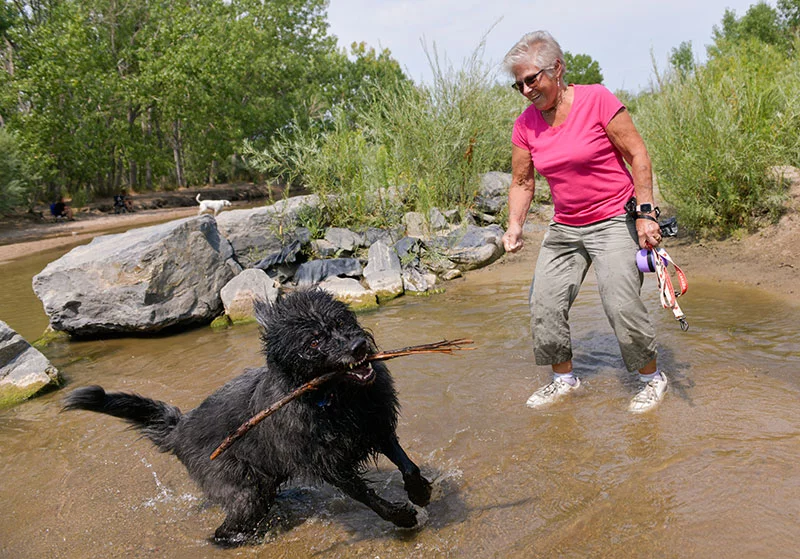
During her two weeks of inpatient rehab, Audrey engaged in intensive physical therapy and then went home and completed an additional three months of outpatient physical therapy work with Edwards.
“Her symptoms had been so severe. Seeing her progress was amazing. The fact she was brave enough to go through surgery again after everything she went through … I’m just so proud of her,” Edwards said.
“Toward the end of our time working together, she would waltz in like she had no problem and was quickly walking five miles a day. I had to tell her to slow down since she was beginning to develop overuse injuries.”
Walking her dog, sewing for friends, family and charity: Audrey has a new life after surgery
Audrey’s doctors are amazed at the difference in her since her surgery.
“The fact that she has fought for her health is huge,” Kleck said. “She’s got a big heart, and I love how she has put in the effort and taken the lead in her recovery.”
Dobbelstein praised the multi-disciplinary approach to Audrey’s improved health over the past year, including a care team that supported her desire for a recovery on her own terms.
“She was not satisfied with her life and her health. She spoke up, and she made the changes needed to get back to where she wanted to be,” he said.
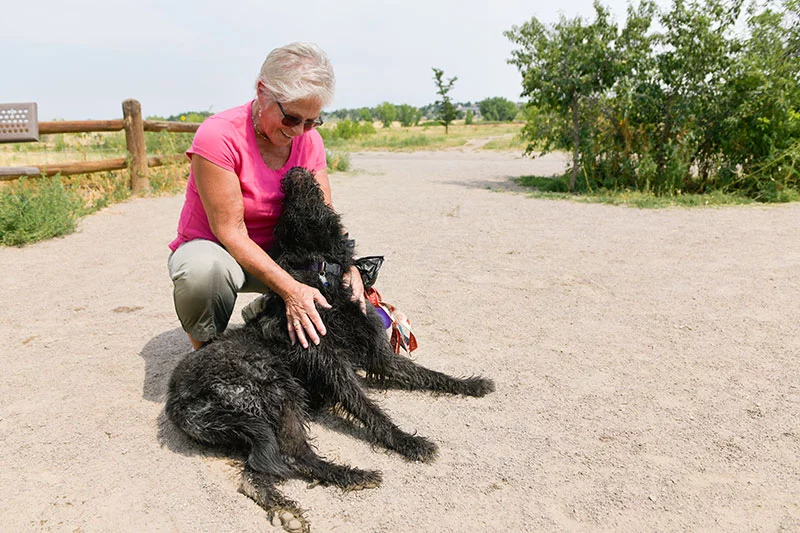
Audrey now has newfound energy, initiative and enthusiasm. She’s using her formidable crafting skills to crochet blankets for friends and family, make diaper bags for new mothers and sew scent blankets for babies and their moms in neonatal intensive care units.
But perhaps most importantly, she has her hard-fought independence again as she walks 15,000-plus steps a day, some of it with her golden retriever/Irish wolfhound companion Bella. She also wants to give hope to others suffering from back problems and pain med reliance.
“Don’t give up. Look at me. If I can do it, others can. I feel amazing, and I am enjoying life. I’m alive, and I have joy.”
